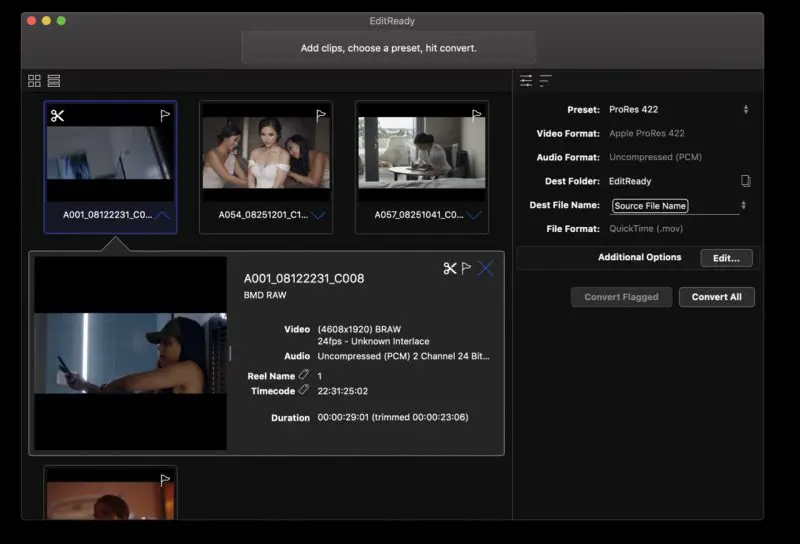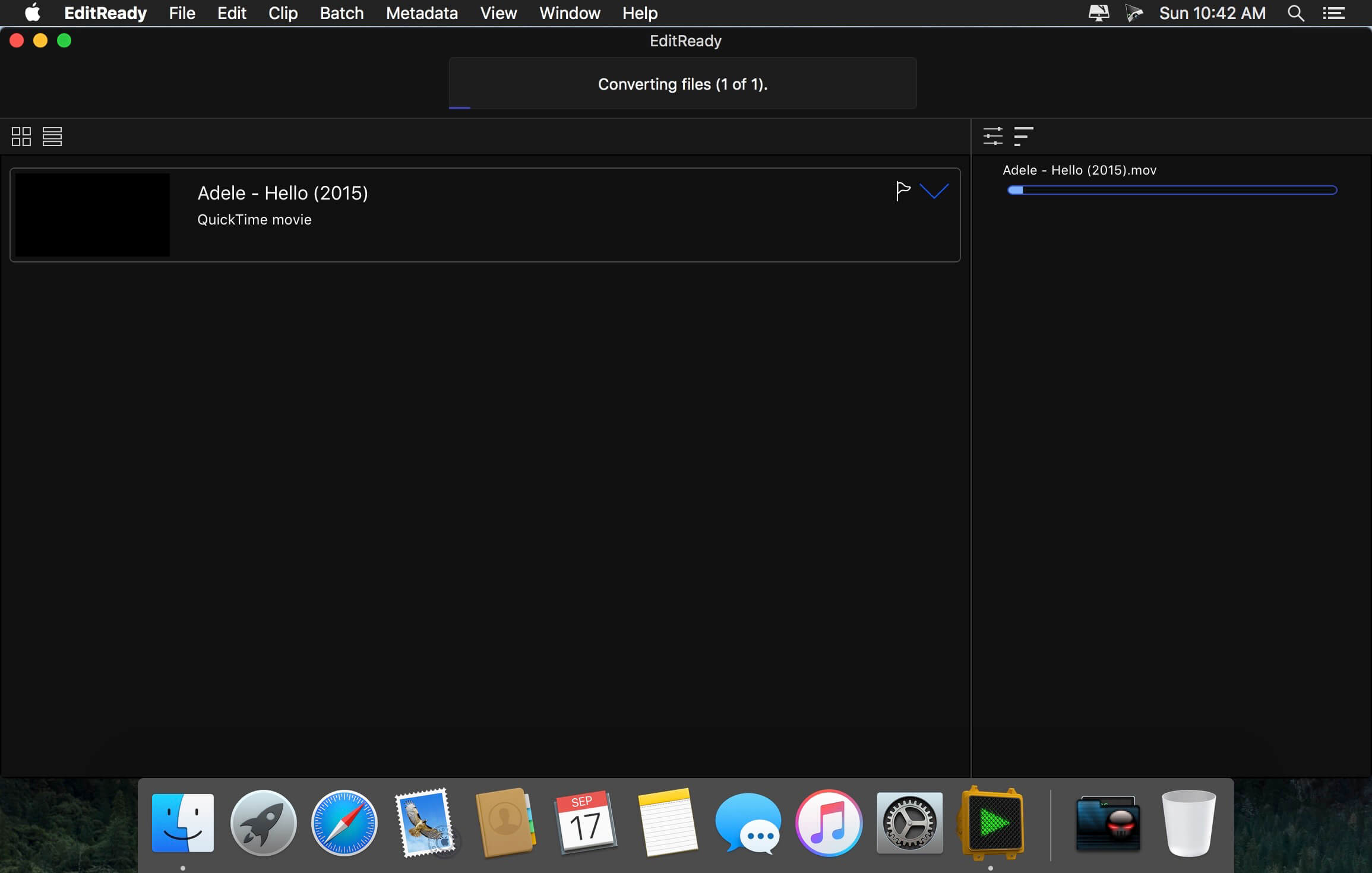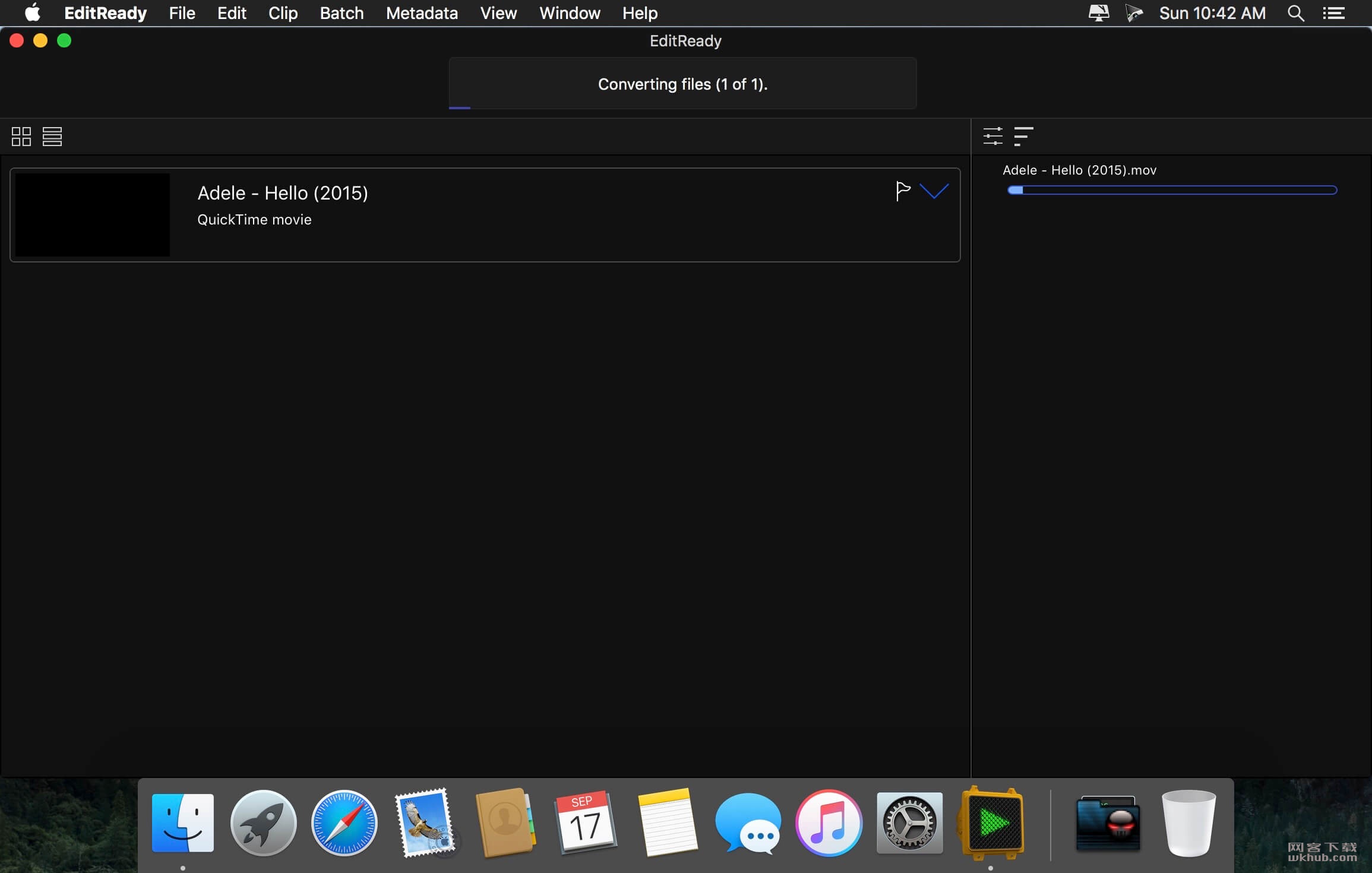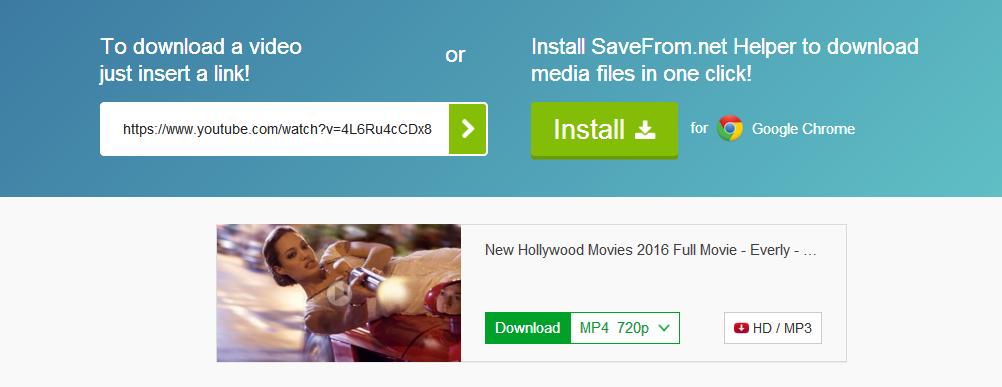


The files were converted in seconds and were all in sync and good to go for FCP. It's super easy and very fast to create a preset (video passthrough/audio to AAC) and location, drag in the footage from the card and hit enter. How about Apple Compressor though? Chances are you own it already - I do! And low and behold it does have the video passthrough option. Handbrake is great and I use it occasionally - but it does not seem to have a video passthrough function. And I would love to be able to batch all the files on my card in one go. Just converting the audio is a fantastic idea so you can be sure you won't harm the video quality! ffmpeg is the killer app for this.īut I have to admit that I am not very good with the command line. Audio formats can also differ, such as one supporting Dolby AC-3 while another supports PCM (it varies from camera to camera, so check the manual).Ffmpeg -i SAM_1165.mp4 -c:v copy -c:a aac SAM_1165.mov (for instance) Many cameras also offer higher resolutions such as 4K in XAVC, something which AVCHD doesn’t support due to being an older container. So pick based on which bitrate you prefer.
Editready output to mp4 professional#
You don’t need to rewrap or transcode the footage to get access to professional quality QA tools. Any camera files EditReady supports: AVCHD, HDV, MXF, MOV and MP4. In XAVC however, it only runs at 50mpbs regardless if you record in 30p or 60p. EditReady provides easy, powerful, and fast transcoding for video professionals. This means if you own both EditReady and ScopeBox you can now get live video scopes of your camera originals right from the EditReady preview player. In 1080i, AVCHD has 4 record modes ranging from 5mbps to 24, and in 1080p60, records at 28mbps. I have a Sony Handycam which supports both, and AVCHD supports 5 different bit rates. Noticeably, XAVC generally uses higher bitrates compared to AVCHD. The main difference between the two is that AVCHD was originally intended for rotational media such as DVD, Blu-Ray and HDD, while XAVC was designed for faster solid state storage, such as flash and SSD drives. Both use the h.264 codec for video, also known as AVC or Advance Video Coding (hence why both use AVC in the name). They are basically just different container files, with AVCHD created in 2006 and XAVC in 2012. (since H.265 will not probably work on a lot of TVs i think) That selecting "H.264 (VideoToolbox)" as encoder engine in the video tab, right? although Handbrake with T2 & Quicksync support seems a win.
Editready output to mp4 mp4#
Should i change recording to use XAVC-S format which outputs MP4 files for more compatibility and probably ease of editing in iMovie?įor the already existing bunch of MTS files, what converter do you recommend (except handbrake) that makes use of Intel QuickSync? I have a 2018 Mac Mini i5 which supports QS.and also has the T2 chip. if they're not in the original folder structure. EditReady 22.3 Released Support for Canon Cinema RAW Light and ARRI ALEXA 35. However some TVs have issues with MTS files, esp. Could not write header for output file 0 (incorrect codec parameters ).

Editready output to mp4 tv#
This SSD will be used to plug in TV to playback the video library. I "showed contents" of the card all the way to the MTS files, which i backup-ed over to an external SSD.

Given a Sony camera that records in both AVCHD and XAVC-S, what is the recommended recording format to use if i'm going to edit the files on a Mac?Ĭurrently there's a bunch of blu-ray folder structures on the sdcard because it was set to record in AVCHD.


 0 kommentar(er)
0 kommentar(er)
